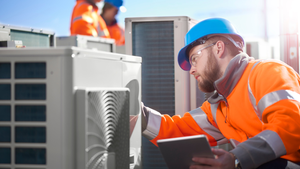The growing crisis of pedestrian safety: A call for predictive & prescriptive AI-driven solutionsThe growing crisis of pedestrian safety: A call for predictive & prescriptive AI-driven solutions
June 26, 2024

In recent years, pedestrian safety has become a growing issue in urban planning and traffic management. Alarmingly, the number of traffic-related incidents and fatalities involving pedestrians has increased rapidly, raising significant concerns among policymakers, city planners and the general public.
According to a report from the Governors Highway Safety Association (GHSA), pedestrian deaths in the United States dropped by 4% in the first half of 2023, but remain 19% higher than in 2019 before the pandemic began, and fatalities have risen a staggering 58% between the first half of 2013 and 2023.
It’s time city planners and officials took a closer look at the reasons behind the worsening pedestrian safety, the dangers at intersections, and how artificial intelligence (AI) transit prioritization systems can play a crucial role in improving safety at these critical junctures.
The deterioration of pedestrian safety
One of the primary reasons for the increase in pedestrian deaths is the rise in vehicle miles traveled (VMT). As more people drive, the likelihood of pedestrian-vehicle interactions increases, leading to a higher number of accidents.
Another contributing factor is distracted driving while sitting in traffic. The ubiquity of smartphones and in-car entertainment systems has led to a surge in distracted driving incidents. Drivers who are stuck in traffic are increasingly texting, browsing social media, looking at in-car infotainment systems or using navigation apps, and are less likely to notice pedestrians, leading to more accidents.
Urban sprawl & taking a citizen approach in urban design
Urban sprawl and inadequate pedestrian infrastructure also play significant roles. Many cities were designed with a focus on vehicle traffic rather than pedestrian movement. As a result, sidewalks, crosswalks and pedestrian signals are often inadequate or simply configured.
Intersections are particularly hazardous for pedestrians. According to the National Highway Traffic Safety Administration (NHTSA), nearly 40% of pedestrian fatalities occur at intersections.
Intersections today are complex environments where multiple streams of traffic converge. Pedestrians must navigate vehicles turning left or right, often against the light, while also contending with cyclists and other pedestrians. This complexity increases the likelihood of accidents.
Reasons for increased traffic-related incidents
The increase in traffic-related incidents involving pedestrians can be attributed to several societal and technological changes. Urbanization, while generally positive for economic growth and social vibrancy, has brought about denser traffic conditions. Cities are seeing more cars on the road and more people walking, creating additional opportunities for conflicts between pedestrians and vehicles.
City planners and elected officials are not taking pedestrians and citizens into account in their planning efforts. In the development of today’s truly smart cities, the infrastructure is at the core of all things pedestrian. This is being seen up and down the West coast of the U.S., in cities like Seattle; Portland, Ore.; and San Jose, Calif., where officials are reshaping busy corridor strategies leveraging AI and data technology to move urban transit, pedestrians, bikers, commuters, and first responder vehicles in a more concerted effort.
These reshaped urban transit strategies, centered on prescriptive efforts in reducing congestion, have resulted in less stop-and-go traffic, where pedestrians can be more in tune where they co-exist better with traffic systems.
The design of modern vehicles also plays a role. Today’s cars are equipped with numerous in-dash technologies that, while convenient, can also be distracting. Infotainment systems, navigation aids, and even advanced driver assistance systems can divert attention away from the road. Furthermore, larger vehicles like SUVs and trucks, which are more popular today than ever, pose a greater threat to pedestrians due to their size and weight.
As one example, Tesla’s Cybertruck is measured at 6,843 pounds, and can accelerate from 0-60 mph in 2.6 seconds. For comparison, the 2023 Ford F-150 starts at slightly more than 4,000 pounds and can go from 0-60 mph in about 5.5 seconds. The Cybertruck’s extreme acceleration capabilities, combined with its weight, means that drivers will have less time to react to pedestrians, and collisions with them will be deadlier.
The role of AI in enhancing pedestrian safety at intersections
AI offers promising solutions to improve pedestrian safety at intersections. AI transit prioritization systems can enhance the management of traffic flow, reduce accidents, and save lives. Here’s how:
Adaptive traffic signals:
AI-driven adaptive traffic signals can adjust signal timing based on real-time traffic conditions and pedestrian activity. Traditional traffic signals operate on fixed schedules that do not account for variations in traffic flow or pedestrian presence. AI systems can analyze data from cameras, sensors, and other inputs to dynamically adjust signal timings, ensuring pedestrians have sufficient time to cross safely.This will result in resetting roads not just to the demands of vehicles and constantly changing vehicle traffic patterns, but also resetting to pedestrian and bicyclist demands. Imagine a day when walkers and runners can enjoy a series of green lights, in addition to cars and buses.
Predictive analytics:
AI can use historical data and real-time inputs to predict potential pedestrian-vehicle conflicts. By identifying patterns and high-risk times or conditions, city planners and traffic managers can implement targeted measures to enhance safety. For instance, predictive models can inform the placement of additional signage, speed bumps or pedestrian crossings in areas with high pedestrian traffic.Enhanced data collection and analysis:
AI can improve the collection and analysis of data related to pedestrian safety. By continuously monitoring traffic patterns, pedestrian movements and accident data, AI systems can provide valuable insights for improving intersection design and traffic management strategies. This data-driven approach enables more informed decision-making and better resource allocation.
As we continue to embrace technological advancements, it is imperative that city planners, policymakers, and technology developers collaborate to implement AI-driven solutions that are more predictive and prescriptive. The future of pedestrian safety depends on our ability to leverage these innovations to create smarter, safer and more efficient urban environments.







